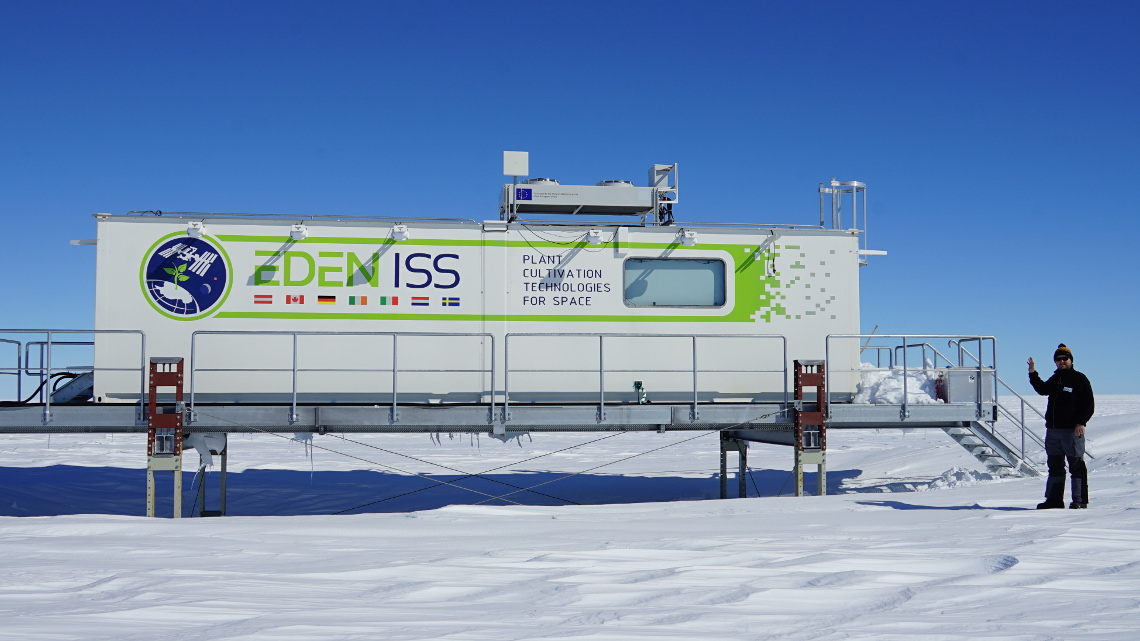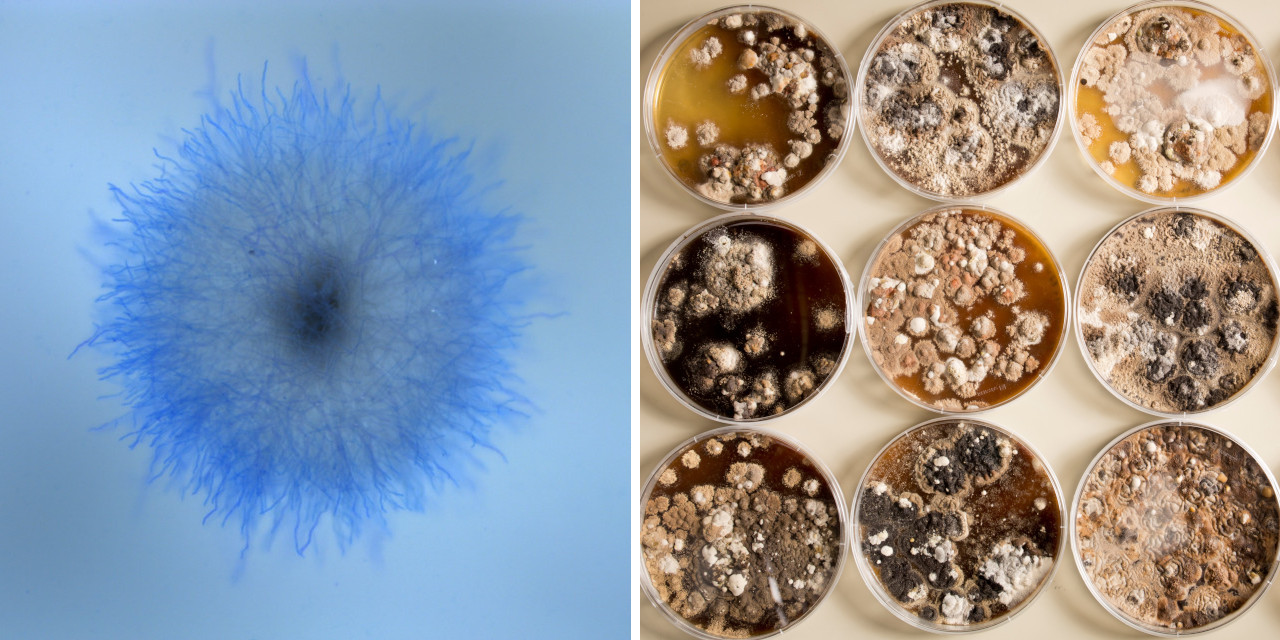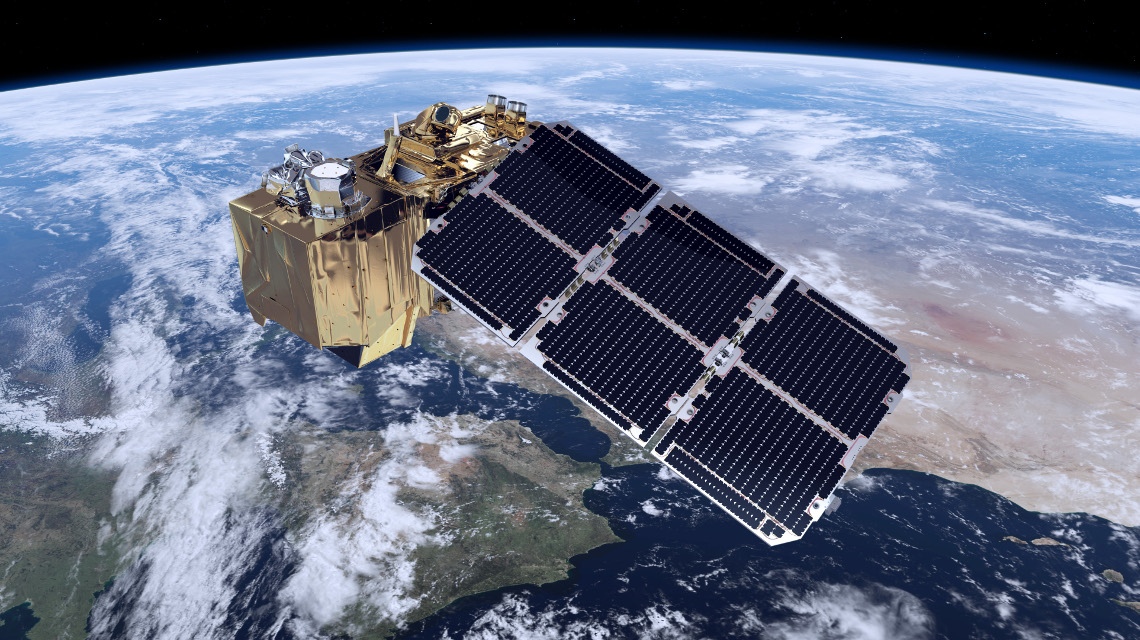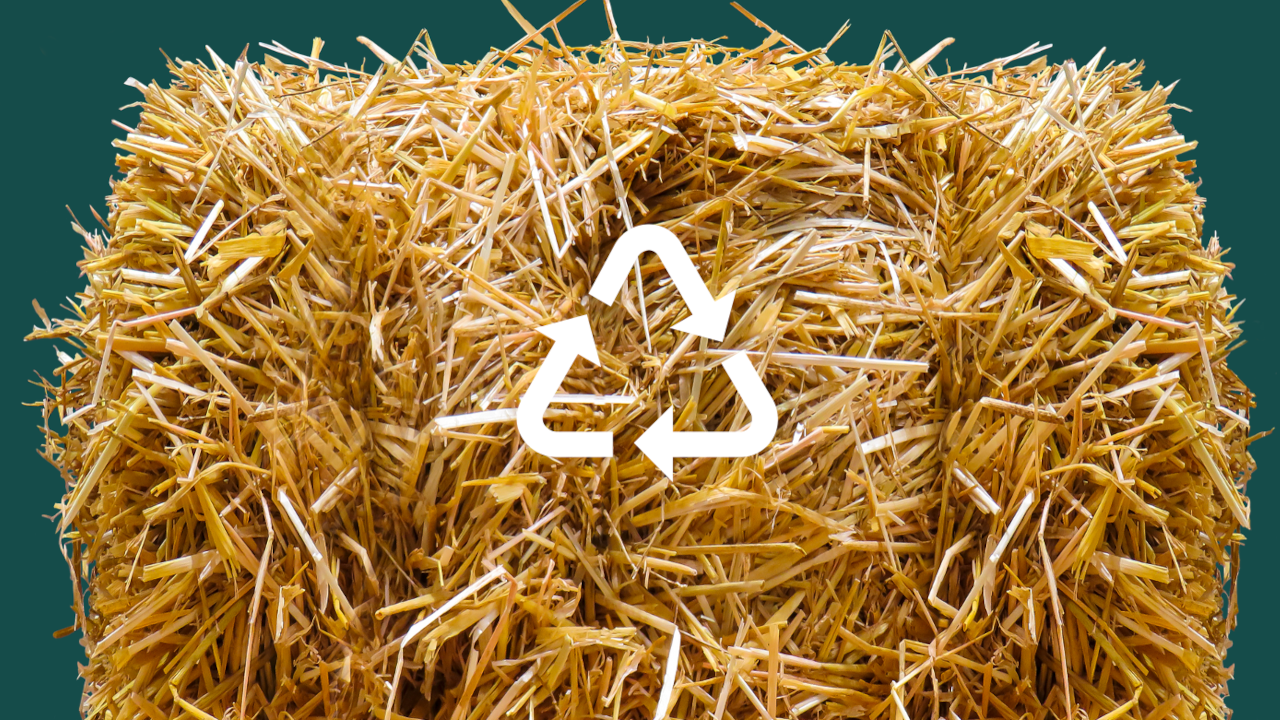Space as an extreme habitat
Space is an extreme and hostile environment - and yet, over the course of various missions, humans not only want to travel and colonise the Moon and Mars, but also to penetrate into the depths of the universe in the future.
Zero gravity and radiation
Zero gravity in space and cosmic radiation cause difficulties for humans as well as for almost all other living beings on Earth. Microgravity leads to osteoporosis and muscle atrophy during prolonged stays. The high-energy radiation ionises atoms and molecules in the body, which can in particular damage the genetic material. Cataracts and arteriosclerosis also become more likely. In addition, the immune system is weakened: T-cells in space showed characteristics similar to those of aged T-cells. It can be assumed that metabolism and cell biology change in other ways. Another effect of weightlessness is that bacterial pathogens are more virulent under this condition
The hostility of space to life becomes even clearer when we look at breathing: neither oxygen nor carbon dioxide exist there. Moreover, the temperature is only just above absolute zero. Nevertheless, people want to explore space out of scientific interest, to extract raw materials and one day colonise alien planets or moons.
Reactions occur differently
Zero gravity in space also has an effect on the sequence of chemical reactions. Without gravity, there are no sedimentation processes. Reaction mixtures can therefore not segregate, which leads to longer reaction times. For substances with different temperatures, the density remains insignificant, which means that no heat gradient is formed. This changes chemical reaction processes. However, some reactions are only made possible at all by the lack of gravity.
The same applies to biochemistry. Zero gravity makes it possible to produce protein crystals in particularly high quality, which play an important role in structural biology research. Liquids take on highly spherical forms and have a lower thermodynamic entropy i.e. a high degree of order. At the same time, the crystal structure can then be better analysed. In one of the first astrobiotechnology experiments in history, erythrocyte cells from rats, rabbits and guinea pigs were to be separated from each other using carrier-free electrophoresis in 1975. This confirmed the expectation that this separation works much better in zero gravity than on Earth.
Biological space knowledge
Astrobiology is a natural science concerned with the study of the origin, evolution, propagation and future of life in the universe.
Astrobiotechnology is concerned with the extraction and study of biomolecules, the cultivation of organisms and biobased processes for the production of food, materials, chemicals and medicines in space.
Sustainable and earth-independent supply in demand
Furthermore, there are no simple supply and provisioning systems in space so far. They are simply not practical over long distances, and even on the comparatively short supply flights to the International Space Station, costs of more than 10,000 euros are incurred per kilogram that is transported. Space stations or colonies on foreign planets must therefore be able to generate food, oxygen, medicines, energy or even materials and tools on site.
Biobased innovations and processes can help ensure that people in space are supplied independently of Earth and make missions more resilient and sustainable. At the same time, bioeconomy innovations have the potential to conserve on-board and extraterrestrial resources and avoid waste.
Science Year 2023 - Our Universe
This thematic report is one of our contributions to the Science Year 2023 - Our Universe
Also visit the Dialogue on Deck on the MS Wissenschaft on 15 August 2023 in Mainz: Bioeconomy in Space and on Earth, a cooperation of bioökonomie.de and the MS Wissenschaft.
More information is available on the official website of the Science Year: wissenschaftsjahr.de
Page 2 of 7
Research and development in space
The special features of space make it an extraordinary laboratory for bioeconomy and health research. This is not only relevant for people on Earth. The effects of space on living beings must be researched to ensure the survival of crews on space missions in the future.
Radiation-resistant organisms
A dynamic field of research is astrobiotechnology, which deals with the cultivation of organisms as well as biobased processes for the production of food, materials, chemicals and medicines in space. Some microorganisms have proven to be enormously adaptable as production organisms. The focus is primarily on the mould Aspergillus niger, which is very radiation-resistant by nature. It has long been used as a cell factory in biotechnology. In addition, numerous molecular tools exist to genetically adapt the fungus. Even today, valuable substances from more than a dozen classes of molecules are produced in A. niger.
The spores of some bacteria are also 500 times more resistant to space radiation than human cells and can survive in space for up to six years. Even algae are suitable for astrobiotechnology: they are often very undemanding and can be used, for example, to produce biokerosene. Their great advantage is that they build up biomass even faster than bacteria. What is generally attractive about microorganisms is that only a few cells need to be taken from Earth, which can then be propagated on the space station or in a colony.
In 2014, the BIOMEX project investigated how numerous microorganisms, mosses and algae cope with the conditions in space on the outside of the International Space Station (ISS).
One advantage is that the conditions in space also put microorganisms under stress. As a reaction to the cosmic radiation and zero gravity, they form substances that they do not produce under terrestrial conditions. The pharmaceutical and cosmetics industries are interested in these biomolecules. Because protective mechanisms against cell-damaging influences could potentially also be used as active substances in human medicine.
However, previous experiments on board the MIR and ISS space stations (especially in the BIOLAB facility in the European Columbus laboratory) initially served to understand how for some microorganisms their genome and the activity of the genes change under the prevailing conditions. In addition to various Aspergillus strains, researchers have so far also studied Penicillium strains and bacteria of the Bacillus family. However, because there are few opportunities for experiments on space flights and they are expensive, progress is slow.

Exploring plant growth
Plants base their root growth on gravity. Plant researchers are investigating how plants react to microgravity and which genes are involved in ensuring that plants thrive despite it. In the mid-term, this could lead to the breeding of plants that cope particularly well with the conditions in space. They could then produce oxygen and food for the astronauts. However, oxygen could also be renewed by photosynthetically active microorganisms such as cyanobacteria.
Similar to plants optimised through breeding, specially designed bacteria could be the means of choice in the future as production systems in space. Synthetic biology makes it possible to produce bacteria that do not occur in nature and are optimised solely for a defined purpose. The better researchers understand how microorganisms adapt to conditions in space, the sooner they will be able to produce specially designed synthetic microorganisms for use in space stations or on other planets.
Protein crystals for pharmaceutical research
Internationally, one of two research priorities is currently to produce and characterise high-purity protein crystals. The hope is to better understand medically relevant proteins and develop new active substances. The other focus is cell biology. Here, there is a particular desire to better understand the growth of vascular, cartilage and bone cells in order to elucidate causes of disease, such as cancer.
In addition to the advantages for the analysis of protein crystals and the separation of cell mixtures, the electrofusion of different cells to form hybrid cells with potentially new properties is also more successful in zero gravity. This was already proven by experiments in the 1980s and 1990s, both for human cells and for plant protoplasts. Applications for such hybrid cells include the production of antibodies or vaccines against tumour cells. To this day, immune system research is an important focus of the German research programme on life sciences in space.
Because microgravity causes osteoporosis and muscle atrophy, there is no better place to conduct cell and animal studies on these diseases. And even though the astronauts try to limit corresponding effects on their bodies through special programmes, their health data helps research.
Nutrition research
Astronaut data is also relevant for nutrition research. Observational studies on nutrition often fail because nutrition is far too complex and there are numerous other factors that influence health. On the ISS, however, there is close monitoring of which nutrients people consume and in what quantities. In addition, their health is examined very closely before, during and after their stay in space. For example, the best knowledge to date about how table salt affects the human body does not come from space, but from Mars-500, a simulation for future Mars flights in which participants lived for 520 days under the conditions of a space stay.
Page 3 of 7
Food production in space
For missions on the ISS space station or future bases on the Moon or Mars, the crew must be supplied with materials, food, medicines and oxygen, as well as energy and fuel, largely independent of supplies from Earth. Provisions from Earth must be kept small, because their transport is complex and expensive, and the lifespan of some provisions is limited in space.
Antarctica as a test base
For food production in space, indoor farming concepts in particular are being tested. Experience with vegetable cultivation under adverse conditions already exists from research stations in Antarctica. The seventh continent therefore serves as a test area for future applications in space. Since 2018, the German Aerospace Institute (DLR) has been using a mobile test facility there to research the production of food and other important resources such as oxygen and water in a hostile environment.
In the EDEN-ISS project, two containers about six metres long were used to grow tomatoes, peppers, cucumbers, various types of lettuce, radishes, spinach, various herbs such as basil, chives, parsley, mint, coriander as well as strawberries. This is because all these plants have a high water content, which limits their shelf life. The EDEN-ISS greenhouse represented an almost completely closed system, which itself provides and circulates air, nutrients, water and energy in precisely controlled quantities. The plants grew aeroponically, which means they were sprayed with a mist of specially adjusted nutrient solutions. A special LED system provided only that part of the light spectrum that the plants needed. This saves energy. UV radiation sterilises the air, making insecticides and pesticides superfluous.

Greenhouses in orbit
In fact, the two greenhouses of the Eu:CROPIS project are in space. At the end of 2018, a satellite was launched into Earth orbit with the two greenhouses on board. The greenhouses contain communities of bacteria in a biofilter, tomato plants, unicellular algae and synthetic urine. The system extracts nitrate from the urine using a process developed at DLR called C.R.O.P. (Combined Regenerative Organic Food Production) and uses it to fertilise the tomatoes - a process that, in view of high mineral fertiliser prices, is also in demand on Earth to produce nitrogen fertiliser from liquid manure and fermentation residues.
The algae on board produce oxygen and detoxify the entire system if necessary. The satellite's rotation simulates the gravitational conditions on the Moon or Mars. Over a total of 62 weeks, DLR researchers used it to analyse whether biological waste can be recycled in space and used to grow fresh food - in this case tomatoes. Three of the four experiments were successfully completed at the end of 2019. They demonstrate that biological life support systems, which supply astronauts with air, water and food, can be stable over a long period of time.
Higher yields with adapted wheat varieties
Researchers from the School of Life Sciences at the Technical University of Munich (TUM) are testing the cultivation of wheat in vertical indoor farms. As part of the research project "Revolution in Food Production", the plants are exposed to light for 20 hours a day. A space-saving wheat bred by the US space agency NASA is used. Instead of one metre, it rises only 50 centimetres. With a ripening phase of only 60 days, the TUM researchers can harvest not one, but five to six crops a year, with significantly less water consumption and without the use of pesticides.
In addition, there are many other systems, some of which are already in commercial use, that produce vegetables and herbs hydro- or aeroponically, i.e. cultivating the plants without soil in hydroponic systems. They were developed primarily for terrestrial applications to enable agriculture in cities or regions with less fertile soils. But the knowledge gained here can also be used in further developments in space.
Producing meat from muscle stem cells
Other cells and microorganisms also offer themselves as production systems for space stations and planetary bases. Instead of livestock farming, cell-based meat as well as dairy products could be produced by cultivating muscle stem cells in the laboratory, thus enriching diets.
Page 4 of 7
Producing biomaterials
Biological resources and biobased processes not only help with food production in space. They can also help to produce interesting materials.
Seaweed as heat protection
The bioeconomy is already providing innovations for space technology. At first glance, it may sound surprising what is being researched until autumn 2023 at the Institute of Natural Product Technology at TU Dresden with funds from the BMBF ideas competition "New Products for the Bioeconomy". Experts there intend to produce an ablative heat shield from seaweed for application in space travel. Considering that seaweed is already used as a particularly heat-resistant insulating material in the construction industry, the approach seems quite logical.
Last but not least, biobased sensors can play an important role in monitoring environmental parameters on space stations or in planetary bases. Antibodies or enzymes bind specifically to certain substances and thus detect their presence or concentration. This can be useful to detect pollutants in the air or drinking water at an early stage and thus reduce risks in a closed system such as a space station.
Building materials from fungi
Fungal biotechnology also offers interesting approaches for applications in space. For example, mycelium, the network of cell threads formed by fungi, can be used as a composite material. It can then be used as a building material instead of wood, but can also be a strong insulating material, at least in combination with plant residues such as straw. Even packaging which can be used instead of polystyrene is already being produced with the help of fungi. Here, too, the great advantage of an application in space would be that the material is completely biodegradable and can thus be recycled. NASA is testing its use as part of a "Myco-architecture Project".
Biobased 3D printing
A technology that would also be very practical in space is 3D printing. Complex three-dimensional objects can be printed from different filaments, from food to implants to spare parts. Biobased raw materials are already being used more and more frequently. For food, for example, the shelf life could be significantly increased because the individual raw materials can usually be stored longer than the finished product.
Whether the method can easily be used for space missions is currently being researched. The lack of gravity could prove to be a challenge that still needs to be overcome. Here, too, its recyclability would be an important advantage. In principle, it is possible to shred 3D-printed objects and reuse the material as filament.
Page 5 of 7
Cells as biological chemical and pharmaceutical factories
The potential of microbial biofactories for applications in space is even greater. Today, numerous fine chemicals are produced in Escherichia coli, as well as enzymes, which in turn can be used for cell-free bioproduction. The baker's yeast Saccharomyces cerevisiae is an excellent producer of bioethanol. The bacterium Clostridium acetobutylicum also forms ethanol in addition to the butyric acid that gives it its name, but also butanol, which is even more interesting for biofuels. Bioplastics can be produced in space by the bacterium Lactobacillus delbrueckii, for example: It forms lactic acid, the basis of the bioplastic PLA.

Mushrooms could be of particular interest for space stations and planetary bases. Not so much because they are essential for the fermentation of beer, wine and bread, but because they are ideal recyclers and can thus be perfectly integrated into circulation systems. For example, the mould Aspergillus niger filters heavy metals from wastewater and can thus purify the water and recover valuable metal resources at the same time.
Astrobioeconomics is observing with particular interest a fusion of electrobiochemistry and biotechnology, so-called electrobiotechnology. It is characterised by the fact that the production organisms do not draw their energy from sugar or similar nutrient media, but from electricity. In combination with CO2 or other carbon-containing waste materials, this is sufficient for certain microorganisms to grow and form their metabolic products. If these bacteria are now genetically adapted or directly designed accordingly by means of synthetic biology, a multitude of chemical compounds can be produced with electricity and CO2 alone. Electricity is abundantly available in space as a result of solar radiation, and CO2 is produced as a waste product of human respiration alone.
Other microorganisms could produce important pharmaceuticals and vaccines. With further advances in synthetic biology and automation of laboratory and production technology, even researchers on Earth could develop a therapy and then transmit the blueprint for a bacterium to produce the drug to the space colony where the microorganism would be produced.
The microalgae already mentioned in food production offer another benefit. They are rich in oils and are being researched in numerous projects as production organisms for biofuels or hydrogen. The TU Munich, for example, has explored how algae can optimally thrive with artificial lighting and controlled climate conditions in order to produce biokerosene with them.
Page 6 of 7
Biobased upcycling: recycling waste in space
Ideally, every waste material should become a raw material again on space stations or planetary bases, even if this may sometimes sound unusual, as in the PeePower research project, in which researchers test a process to generate electricity from the microbial decomposition of urine. At the Federal Horticultural Show 2023 in Mannheim, guests will be able to charge their smartphones while going to the toilet. In general, biobased residues, from food waste to the excretions of astronauts, can be used in the bioeconomy as raw materials for biotechnological processes.
Video: PeePower! - Electricity from biocatalysis
Here, too, can microorganisms do much more. The SUSKULT research project, for example, is testing how microbes recover nutrients such as nitrogen, potassium and phosphorus from wastewater from a sewage treatment plant. This can then be used for vegetable cultivation together with CO2, water and heat, which also comes from the sewage treatment plant. A similar goal was pursued by the BiNäA project, which used microalgae to recover nutrients from sewage treatment plants in order to use them again as fertiliser.
The European Space Agency ESA supports the MELiSSA (Micro-Ecological Life Support System Alternative) initiative, in which closed-loop systems are being tested with the help of microbial upcycling strategies, among other things.
Page 7 of 7
Remote sensing via satellite
Space technologies are by no means aimed solely at enabling people to live in the vastness of space. This quickly becomes clear when looking up at the night sky, where countless satellites are orbiting. Among them are many Earth observation satellites whose measurement data are important tools for agriculture, forestry, nature conservation and other areas of the bioeconomy. In this way, technology in space contributes to achieving the UN Sustainable Development Goals (SDGs).
Satellite-borne sensors provide environmental data
Important Earth observation satellites from the ESA Copernicus programme are Sentinel-1, Sentinel-2 and Sentinel-6. Technically, the data collection of these satellites is mostly based on optical sensors. In addition to visible light, they also record other areas of the spectrum or the thermal radiation of the Earth's surface. In the GLAM.DE research project funded by the Federal Ministry of Economics and Technology, for example, a team from the University of Würzburg compared satellite data with measurements taken on the ground. From these correlations, the researchers have deduced how information about plant growth, biomass and soil moisture can be extracted from the satellite data.
The SYMOBIO project, which is funded by the Federal Ministry of Education and Research and has now entered a second funding period, also uses satellite remote sensing to collect bioeconomically relevant parameters. The project aims to develop a self-learning monitoring system. The satellite data are to make changes in land use visible and show how agricultural and forestry use affects biodiversity. Images from space thus help to understand the effects of the bioeconomy in different ways.

Important foundation for precision agriculture
Remote sensing with satellites continues to gain importance in agriculture. This makes it possible to derive information about the developmental state of plants even from a great distance. While precision agriculture needs data on individual plants and therefore tends to rely on drones or ground-based robots, satellite images allow another important analysis: because satellites can record how high a plant has grown and how well it is supplied with water, for example, intelligent algorithms can derive harvest forecasts from this. This is of interest not only to farmers and their customers, but also to governments that need to ensure food for their population, or to insurance companies that insure farms against crop failure.
To this end, the Yield Consortium research project combines satellite data with weather data, information about soil conditions and plant growth cycles. Currently, AI is able to produce yield forecasts for the wheat and rapeseed harvests in Germany up to 120 days before the harvest, but also for the soybean harvest in Argentina and Uruguay. In the future, the system will cover more crops and more countries
Climate research and meteorology
One should not forget what is probably the best-known satellite application for the bioeconomy, weather forecasting. Reliable forecasts of precipitation amounts and times allow agricultural businesses to apply fertilisers or pesticides at the right time, gather the harvest or take measures against impending periods of drought.
In forestry, satellites primarily monitor the tree population. This not only allows illegal logging to be quickly detected and stopped, but also the health of forests to be assessed. For example, DLR investigated the extent of tree loss in Germany between January 2018 and April 2021. According to this, trees were removed or died across 500,000 hectares. This made it possible to determine that the damage was significantly greater than the Federal Government's forest status report had shown using other methods, important information not only for the bioeconomy, which relies on wood as a raw material. For if the loss of wood is greater than the amount that grows back, the limits of sustainability have been exceeded.
Other satellites measure glacier melt and groundwater levels. In times of increasing droughts, data on the water balance of the soil are elementary for location decisions and adaptation measures to the climate crisis in order to maintain biomass production.
Hyperspectral satellite EnMAP provides environmental data
Biodiversity and the composition of ecosystems are important aspects of a sustainable bioeconomy. With its hyperspectral images, the EnMAP environmental satellite can answer a number of questions in this regard: How polluted is a particular body of water? What minerals or pollutants are in the soil in a region? What is growing there and how is the supply of nutrients to the plants? How does climate change affect the different ecosystems? The resolution is 30 metres, and updates of the same location are possible after four days at the latest.
Because regardless of whether it is for space or from space, bioeconomy should not only be innovative, but also sustainable and contribute to protecting the climate and biodiversity.




